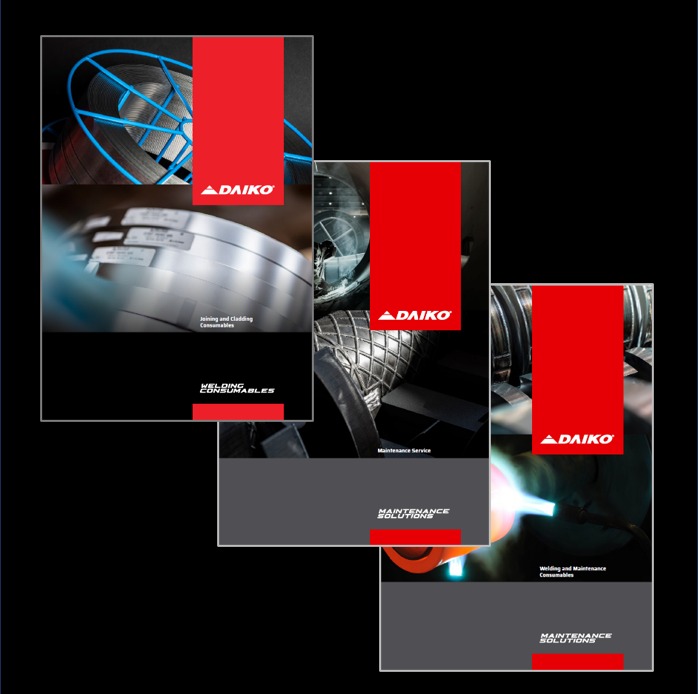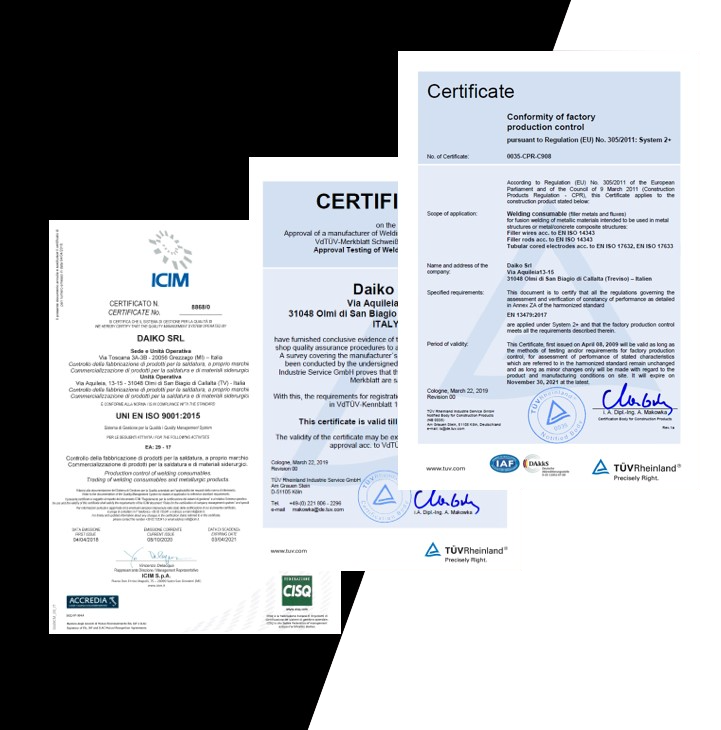- Home
- >
- All DAIKO products
- >
- CAST IRON
- >
- Ni CI
Ni CI
Application
Pure nickel consumables serve a vital role in the welding and repair processes involving standard grades of grey cast irons and malleable cast irons. These consumables yield low-strength deposits, providing a distinct advantage as they can be easily machined, even when applied in thin layers. The inherent resistance to hardening in diluted weld metal enhances their utility, particularly for buttering applications prior to the use of more economically efficient NiFe consumables. Beyond their primary applications, pure nickel consumables demonstrate versatility by facilitating the joining of these cast irons with other materials, including steels, monels, copper, etc. This proves especially beneficial in scenarios where high strength is not the foremost requirement. Typical components that benefit from the application of pure nickel consumables include a wide array of general engineering castings. These encompass crucial elements such as machine bases, engine blocks, gear housings, and similar structures that operate under relatively low stresses. The adaptability and effectiveness of pure nickel consumables make them integral to the fabrication and maintenance of components in various engineering applications.
Alloy Type
Pure nickel type for welding cast iron.
Microstructure
Austenitic nickel with finely
distributed graphite.
Materials
Grey iron.
EN W.Nr.: 1561:2011 Grey cast irons+
ASTM: A159, A319, A126, A48.
EN W.Nr.: 1561:2011 Grey cast irons+
ASTM: A159, A319, A126, A48.
Welding & PWHT
Welding is commonly performed without preheat, although scenarios involving heavy multipass deposits or highly restrained joints may necessitate preheat, potentially reaching up to 150°C. Before initiating the welding process, it is crucial to prepare surfaces meticulously, employing careful gouging and/or grinding with limited heat application to prevent the propagation of cracks. The designated welding area should be cleaned diligently, removing contaminants such as sand, oil, grease, paint, or rust to the greatest extent possible. Preheating proves advantageous for eliminating impregnated oil on used castings undergoing repairs. In instances where welding is conducted without preheat, it is advisable to minimize the width of the Heat-Affected Zone (HAZ) by utilizing a low heat input and maintaining a low interpass temperature. The application of a skip welding technique can be beneficial in achieving this objective. For welds involving thicker sections or highly restrained conditions, preheat up to 150°C may become imperative. Light peening, aimed at reducing contraction stresses, can offer additional benefits, though caution is warranted to prevent the depletion of weld metal ductility. Buttering the joint faces or the sides of the repair cavity before the filling process can be a desirable practice, whether or not preheat is applied. Upon completion of the welding process, it is recommended to allow the workpiece to cool gradually, with the option of using insulation if deemed necessary for optimal results.
Products of the line Ni CI
| Product name | Process | AWS specifications | EN ISO specifications | |
| DAIKOWT 324 | GTAW |
AWS A5.15
ENi-CI |
- | |
| DAIKOWT 99 | GTAW |
AWS A5.15
ERNi-CI |
EN ISO 18274
S Ni 2061 |
|
| G-TECH 324 | SMAW |
AWS A5.15
ENi-CI |
EN ISO 1071
E C Ni-CI 1 |
|
| G-TECH 99 | SMAW |
AWS A5.15
ENi-CI |
EN ISO 1071
E C Ni-CI 1 |
|
| DAIKOWM 324 | GMAW |
AWS A5.15
ENi-CI |
- | |
| DAIKOWM 99 | GMAW |
AWS A5.15
ERNi-CI |
EN ISO 18274
S Ni 2061 |


